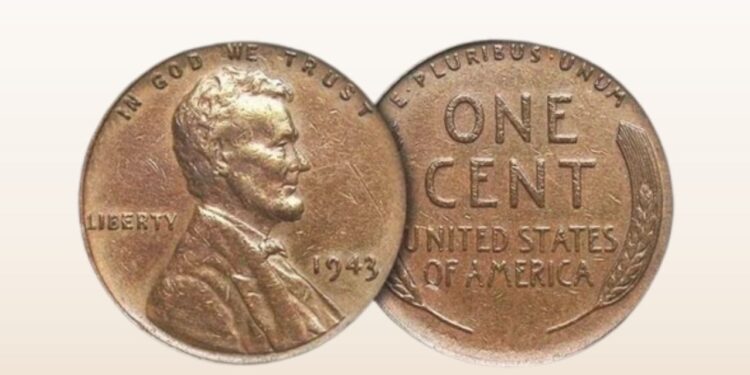Hidden somewhere in America’s vast collection of circulating coins, a single Lincoln Wheat Penny might be worth an astonishing $195 million. This idea has sparked a nationwide treasure hunt, capturing the imagination of coin collectors and everyday people alike. While most pennies are considered nearly worthless, certain rare versions could be worth more than luxury mansions, private jets, and sports cars combined.
What makes this story so fascinating is that such a valuable penny might still be out there, unnoticed, possibly sitting in a jar of spare change or passed through everyday transactions.
The Origins of the Lincoln Wheat Penny
The Lincoln Wheat Penny was first introduced in 1909 to honor the 100th birthday of President Abraham Lincoln. This marked a historic moment, as it was the first U.S. circulating coin to feature a real historical figure rather than symbolic imagery.
Designed by sculptor Victor David Brenner, the penny featured Lincoln’s profile on the obverse (front) and two wheat stalks on the reverse, symbolizing America’s agricultural prosperity. This design remained in circulation until 1958, making it one of the most recognizable coins in U.S. history.
Why Would a Penny Be Worth $195 Million?
Several factors determine the extraordinary value of certain Lincoln Wheat Pennies. A combination of rarity, historical significance, condition, and authentication from numismatic experts can turn a simple one-cent coin into a multimillion-dollar treasure.
Key Factors That Influence Value:
| Factor | Impact on Value |
|---|---|
| Rarity | Extremely rare coins, especially with minting errors, are highly sought after. |
| Historical Significance | Coins linked to major events in history (like wartime production changes) are more valuable. |
| Condition (Grading) | Coins in pristine «Mint State» condition are worth exponentially more than worn ones. |
| Authentication | Coins verified by respected numismatic organizations can command higher prices. |
The theoretical $195 million Lincoln Wheat Penny would have to be an ultra-rare error coin, in perfect condition, and carry immense historical significance.
The 1943 Copper Penny: The Most Valuable Error Coin
The most sought-after Lincoln Wheat Penny originates from World War II. In 1943, the U.S. Mint switched to zinc-coated steel pennies to conserve copper for wartime supplies. However, a small number of 1943 pennies were accidentally struck on leftover copper blanks from 1942, creating one of the most famous error coins in history.
With fewer than 30 confirmed examples, the 1943 copper penny is considered one of the rarest and most valuable U.S. coins. Depending on its condition and mint mark, a genuine 1943 copper penny can fetch anywhere from hundreds of thousands to millions of dollars at auction.
The Importance of Condition in Coin Collecting
For a Lincoln Wheat Penny to reach the incredible valuation of $195 million, it would need to be in near-perfect condition. Professional coin grading services assess a coin’s condition based on the following factors:
- Surface preservation – The coin should have minimal scratches or wear.
- Original luster – Coins with their original shine are far more valuable.
- Sharpness of details – The finer the details, the better the grade.
- No damage – Any dents, bends, or corrosion drastically lower a coin’s worth.
A pristine, uncirculated 1943 copper penny, combined with the right provenance and demand, could hypothetically reach an astronomical price.
Where Might These Rare Pennies Be Hiding?
One of the most exciting aspects of Lincoln Wheat Pennies is that valuable specimens could be hiding anywhere. Unlike other rare collectibles that were immediately recognized and stored safely, many valuable pennies entered regular circulation. Some may still be found in:
- Old coin collections or albums
- Inherited change jars and piggy banks
- Dresser drawers and forgotten storage boxes
- Random pocket change from daily transactions
Many valuable coins have been discovered by chance, making the hunt for rare pennies accessible to anyone with a keen eye.
Key Lincoln Wheat Pennies to Look For
While the 1943 copper penny is the most famous, other rare and valuable Lincoln Wheat Pennies exist. Serious collectors and treasure hunters should keep an eye out for:
| Year & Mint Mark | Why It’s Valuable |
|---|---|
| 1909-S VDB | Features Victor David Brenner’s initials; low mintage. |
| 1914-D | One of the rarest early Lincoln pennies. |
| 1922 (No D Mint Mark) | Denver mint accidentally left off the «D» mint mark. |
| 1931-S | Low mintage during the Great Depression. |
| 1943 Copper | Extremely rare wartime error coin. |
| 1944 Steel | A few steel pennies were mistakenly struck in 1944. |
More Than Just a Treasure Hunt
While the dream of finding a multimillion-dollar penny is thrilling, many collectors are drawn to Lincoln Wheat Pennies for more than just financial gain. These small copper coins serve as tangible pieces of American history, reflecting different eras of economic and wartime struggles.
For many enthusiasts, coin collecting is about the joy of discovery, learning about history, and preserving a piece of the past. The excitement of finding a rare coin, even if not worth millions, is a rewarding experience in itself.
The Ongoing Search for the $195 Million Penny
The idea that a single penny could be worth $195 million continues to fuel excitement in the numismatic world. While finding such a coin remains highly unlikely, the thrill of the search keeps collectors motivated. Whether looking through pocket change or exploring old collections, the next big discovery might be just around the corner.
Even if you never stumble upon a $195 million Lincoln Wheat Penny, the journey of learning, collecting, and appreciating history is worth every cent.
FAQs:
1. How do I know if I have a valuable Lincoln Wheat Penny?
Check the date, mint mark, and overall condition. Compare your coin with known rare varieties and consider having it authenticated by a professional grading service.
2. What is the most valuable Lincoln Wheat Penny ever sold?
A 1943 copper penny once sold for over $1.7 million at auction, making it one of the most expensive pennies ever.
3. Can I still find rare wheat pennies in circulation?
Yes! While rare, valuable pennies occasionally appear in pocket change, coin rolls from banks, or old collections.








